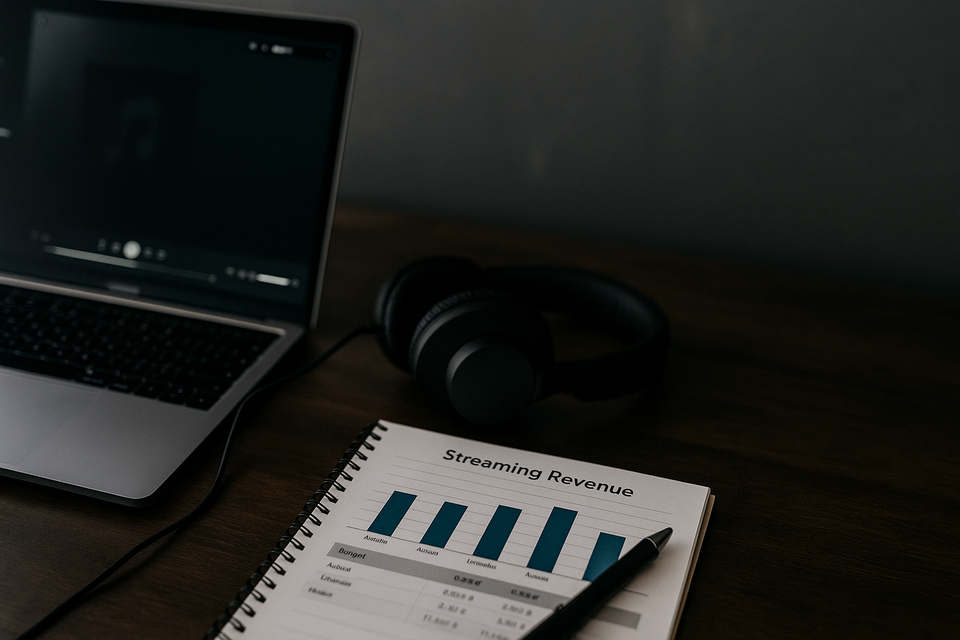Spotify Artificial Streaming Detection: What Labels Need to Know

Introduction
Spotify regularly removes millions of streams flagged as artificial. While the platform claims this protects fairness in the ecosystem, the real financial impact is often carried by labels. Unlike individual artists, labels not only lose potential royalties but also face penalties, administrative overhead, and reputational risks.
1. How Spotify Detects Artificial Streaming
Spotify does not publish exact details of its detection system. However, based on industry observations and distributor statements, common triggers include:
- Unnatural patterns: thousands of streams from the same IP, device fingerprint, or region in a short time.
- Suspicious playlists: sudden spikes from playlists with no organic growth or irrelevant genres.
- Low engagement metrics: streams without saves, shares, or repeat plays.
- Bot-like behavior: repeated listening patterns inconsistent with normal user activity.
While Spotify doesn’t disclose technical details, the platform openly states that artificial streaming is monitored and penalized: Spotify Loud & Clear.
2. Why Labels Are the Biggest Losers
- Royalty Loss: Removed streams = lost income. Unlike a chart drop, the revenue disappears retroactively.
- Distribution Fees Remain: Even if the streams vanish, distributors keep their cut. Labels often cannot reclaim these fees.
- Penalties Passed On: Some distributors charge additional fees when artificial activity is detected.
- Administrative Burden: Labels must adjust royalty statements, explain losses to artists, and handle disputes.
- Reputation Risk: Repeated purges can put a label on the radar of DSPs, harming future trust and releases.
3. The Hidden Cost: Nobody talk about
While artists may distance themselves from fake promotion, labels are left with the bill:
- Upfront Promo Costs: If fake services were used (often without the label’s knowledge), the money is gone.
- Double Loss: First, lost royalties; second, distributor deductions or explicit penalty fees.
- Contractual Gaps: Many label-artist contracts don’t clearly assign responsibility for artificial streaming, leaving the label fully exposed.
- No Recoup Without Revenue: Even if contracts assign responsibility to the artist, recovery isn’t possible if the track generates no income.
4. Artists vs. Labels: Different Consequences
- Artists lose credibility, playlist spots, and momentum.
- Labels lose revenue, pay fees, and absorb reputational damage with DSPs.
- In many cases, labels are financially penalized even if the artist or a external playlist owner booked fake promo independently.
5. What Labels Can Do
- Educate Artists: Make clear that “guaranteed streams” from promo services put everyone at risk.
- Strengthen Contracts: Add clear clauses assigning responsibility for artificial promotion.
- Monitor Data: Track stream origins, territories, and sudden spikes. Early detection can prevent larger losses.
- Vet Playlists: Only work with curators that show organic growth and transparency.
- Choose the Right Distributor: Look for partners with transparency in reporting and fair handling of purges.
6. The Long-Term Risk: Often Overlooked
Artificial streaming doesn’t just reduce royalties — it can damage your relationship with distributors:
- Contract Terminations: Many distributors reserve the right to terminate contracts if repeated artificial activity is detected, even if the label wasn’t directly responsible.
- Takedown Fees: Removing flagged releases can incur costs that the distributor charges back to the label.
- Migration Costs: Moving a catalog to a new distributor often means re-upload fees, lost playlist positions, broken ISRC continuity, and administrative overhead.
- Loss of Trust: DSPs may monitor a label more closely if it has a history of artificial activity, making future distribution partnerships harder to secure.
Example: In 2023, several independent distributors publicly stated that they terminated contracts with labels involved in repeated artificial streaming incidents (see Ditto Music blog and Symphonic Distribution guidelines).
Conclusion
Artificial streaming is not just an artist problem — it is a label problem first. The financial burden of purges, penalties, distributor fees, and even contract terminations often falls on the label, regardless of intent. Labels that build clear processes, contracts, and monitoring systems will be better positioned to protect themselves and their artists from the hidden costs of Spotify’s detection system.
Frequently Asked Questions (FAQ)
1. Does Spotify really remove streams?
Yes. Spotify confirms in its official Loud & Clear resource that it monitors and removes artificial streams to protect its ecosystem. Spotify Loud & Clear
2. Can labels get money back after a purge?
No. Once streams are removed, royalties are not paid out. Distributor fees and takedown costs may still apply, which means labels often face a net loss.
3. How can labels protect themselves from penalties?
- Write contracts that assign responsibility for artificial promotion.
- Monitor streaming data closely for unusual patterns.
- Avoid “guaranteed stream” services or shady playlist deals.
- Choose distributors with transparent reporting and fair policies.
Want to dive deeper into Spotify’s rules, payouts, and strategies?
Browse all related guides here → Spotify Insights & Guides
“If you’re looking for a reliable way to distribute your music to Major Platforms , NexaTunes offers direct distribution with transparent terms. Learn more here → NexaTunes-Distribution”
Get in touch for more information using our livechat
